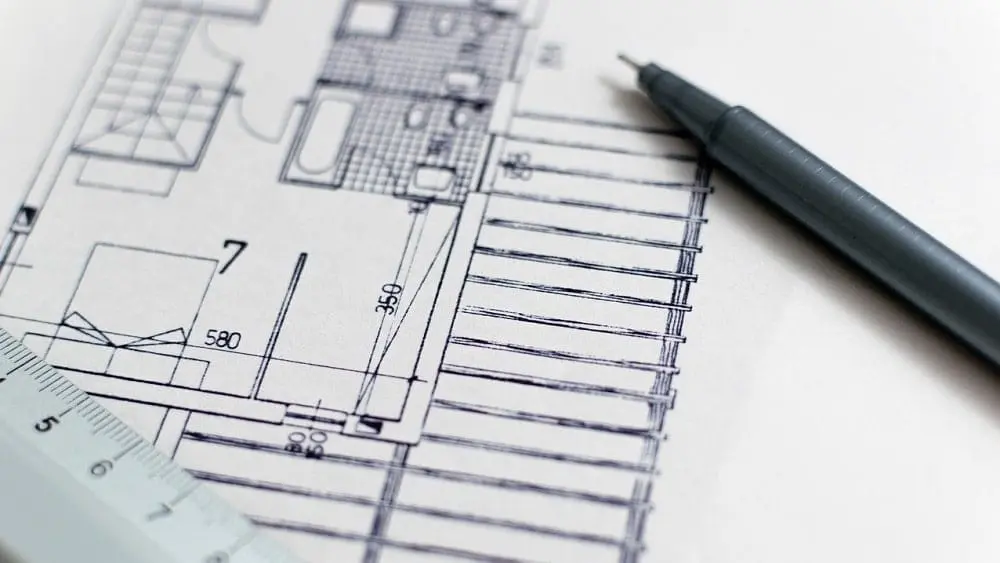
When shopping for a new home, you’ve likely collected a number of project brochures, each with four or more available floor plans.
Making sense of this collection of floor plans to find those that best fit your needs and desires can be a daunting task.
To make it easier to envision your new home from the perspective of a floor plan, we asked for advice from Steve Moore, senior partner in BSB Design, Inc., in West Des Moines, Iowa. With eight offices nationwide, BSB has been a pioneer in residential home space design since 1965. Moore suggests re-visiting each model home on paper with the following in mind to make the process easier:
Experience the Entrance
Imagine the visual impact for guests as they enter the home. Is there a good transition from the outside and views within? “Every plan should be welcoming at the entrance with some semblance of a waiting area or foyer,” says Moore. “There should also be a visual connection to continuing spaces within the home. You don’t want to walk in and view a wall or look into private areas.”
Walk the Plan
Using two fingers, virtually walk the plan. Visualize conducting your normal daily living functions. “There should be a logical separation of public, private and intimate space,” Moore explains. “You should go from public areas to private areas and from private areas to intimate areas of the home. For example, when the primary suite is on the first floor, the bedroom entrance should not be off the living room, dining room or main entry. It should be off a private area at the back of the home.”
Imagine the effect of volume ceilings, sight lines and view corridors. Are the windows ample enough to extend the view outdoors and bring in natural light? “When walking the home,” says Moore, “the sequence is really important. We like to arrange spaces to lengthen the views through the house and make the spaces look bigger.”
Check the circulation Pattern
Is the traffic flow convenient? Will it be easy to take groceries from the garage to the kitchen? Is the dining room convenient to the kitchen? Is there good access to the breakfast room from bedrooms?
Make sure the plan doesn’t have duplicated circulation routes or hallways that waste space. Note the location of stairways. Front stairs can provide an impressive design element while rear stairs offer convenient access from bedrooms to private living areas.
Focus on the Daily Living Area
Virtually walk the plan. Visualize conducting your normal daily living functions in that particular plan.Moore says BSB now calls the family room the daily living area, because it often includes the family entertainment area, the daily eating area and the kitchen. “This area has grown larger and has become the home’s main entertainment space,” explains Moore. “So, focus your plan evaluation heavily in this area to make sure it works for your family.”
Do your design tastes and furniture styles better fit an open, contemporary plan or a more formal, traditional plan? The emphasis today is on a more casual lifestyle with fewer walls or even with half walls. But, this should be a matter of your comfort level. For example, determine how isolated you want the kitchen to be from the daily living area. Some cooks prefer an open kitchen; others prefer more privacy for food preparation and then presentation.
Remember, all family members need a place to do paperwork or homework. Some plans may offer a show-piece office at the foyer, others a working office at the back. Moore’s company is designing more casual office space and is doing multiple small spaces that they call pocket offices near daily living areas. If you have young children, you may want a second entertainment area upstairs where youngsters can hang out. Also note if there is a half bath convenient to the daily living area.
Don’t Overlook the Bedrooms
If you have young children, you will probably want a plan where the secondary bedrooms are close to the primary suite. If you have older children, you may want more separation. If stairs are a problem, you might look for a plan with the primary bedroom located on the first floor.
Now, says Moore, note the primary bath/bedroom relationship. Some like the dramatic impact of a bath that is open or semi-open to the bedroom. Others prefer a primary bath with a door, especially if one person rises early and the other sleeps in. Double sinks and, if possible, double mirror areas are important. With a growing family, you might also want double sinks in the secondary bedrooms or, better yet, “Jack-and-Jill” bathrooms with the vanity areas separated from the toilet and shower.
Check All Room Dimensions
If you entertain a lot, will the public spaces handle the crowd? If you like gourmet cooking, does the kitchen offer extensive work areas? Furnish the home in your mind. Will your couch(s), large screen TV, dining room hutch, bedroom dressers and office desks fit comfortably? Does the bed wall in the primary bedroom allow room for end tables? Is there enough space in closets for clothes and linens?
Don’t Forget Key Back Areas
Besides the kitchen, the two areas that resonate most with homebuyers today are the laundry room and the entrance to the garage, according to Moore. Some plans put the laundry room on the main level, while others put it upstairs next to the bedrooms where most laundry is generated. Which do you prefer? For first-floor laundry rooms, Moore says BSB is expanding the space to make it a combination laundry and craft or hobby room.
Next, check the area where you enter from the garage. Is there room to drop your stuff and hang your coat? Is the path to the kitchen as straightforward as possible? Ideally, there will be storage spots along the way for bulk items and pantry storage in the kitchen for daily groceries.
Finally, gather only those floor plans that seem to fill all of your needs and go back and walk the actual models once again to determine the best option. You’re sure to end up with the new home plan that works best for your lifestyle.

Roy Diez is a freelance writer and marketing professional specializing in the architectural, building and construction industry. He is a former editor-in-chief of Professional Builder magazine.
 The 10 Worst U.S. Cities for Allergies
The 10 Worst U.S. Cities for Allergies
Jerry
Looking at builders do you have floor plans and set prices
Jamie Gonzalez
Hi Jerry,
You can see the floor plans and starting prices by searching for your desired city at NewHomeSource.com. You can even filter by price or builder.